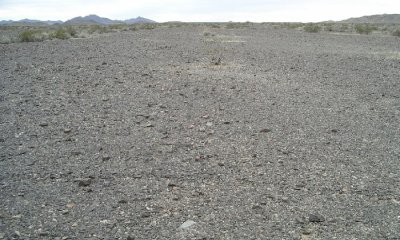
Desert Pavement 2-4" p.z.
Scenario model
Current ecosystem state
Select a state
Management practices/drivers
Select a transition or restoration pathway
- Transition T2A More details
-
No transition or restoration pathway between the selected states has been described
Target ecosystem state
Select a state
Description
State 1 represents the historic-natural condition for this ecological site. It is similar to State 2, but has only native species. If we were to include dynamics for this state it would be the same as displayed in State 2. The presence of non-native species is minimal in State 2, and has not altered the hydrology or fire frequency.
Description
This state represents the most common and most ecologically intact condition for this ecological site at the present time.
Submodel
Description
This state is characterized by significant disruption of the desert pavement surface. This state needs more investigation to determine disturbance pathways, due to a lack of data and variability in soil characteristics.
Submodel
Mechanism
This transition occurs with large-scale displacement of the desert pavement surface. This could be from off-road vehicle use or road construction through the desert pavement. Displacement of large areas of pavement and disturbance of the fine-textured vesicular horizon will cause increased wind and water erosion. Larger scale disturbances can also mobilize nitrates that exist in high amounts near the soil surface, which can cause contamination of surface run-off and groundwaters (Graham et al. 2008).
Model keys
Briefcase
Add ecological sites and Major Land Resource Areas to your briefcase by clicking on the briefcase (![]() ) icon wherever it occurs. Drag and drop items to reorder. Cookies are used to store briefcase items between browsing sessions. Because of this, the number of items that can be added to your briefcase is limited, and briefcase items added on one device and browser cannot be accessed from another device or browser. Users who do not wish to place cookies on their devices should not use the briefcase tool. Briefcase cookies serve no other purpose than described here and are deleted whenever browsing history is cleared.
) icon wherever it occurs. Drag and drop items to reorder. Cookies are used to store briefcase items between browsing sessions. Because of this, the number of items that can be added to your briefcase is limited, and briefcase items added on one device and browser cannot be accessed from another device or browser. Users who do not wish to place cookies on their devices should not use the briefcase tool. Briefcase cookies serve no other purpose than described here and are deleted whenever browsing history is cleared.
Ecological sites
Major Land Resource Areas
The Ecosystem Dynamics Interpretive Tool is an information system framework developed by the USDA-ARS Jornada Experimental Range, USDA Natural Resources Conservation Service, and New Mexico State University.
